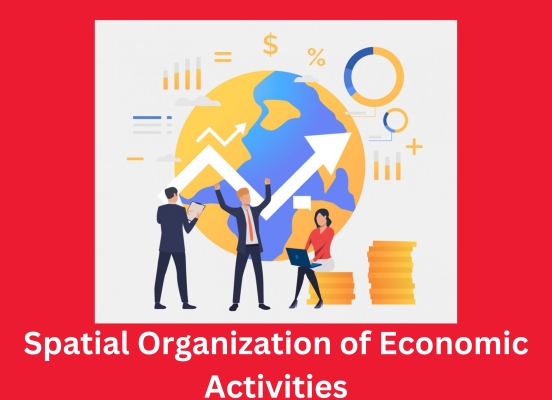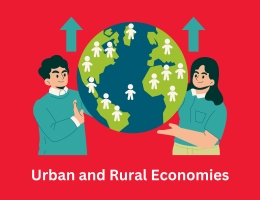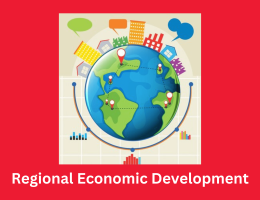
Spatial Organization of Economic Activities
- By admin --
- Thursday, 07 Mar, 2024
Introduction:
The arrangement and dispersion of diverse economic processes, industries, and activities throughout geographic space is referred to as the spatial organization of economic activities. Analyzing the trends, variables, and theories that affect the concentration, agglomeration, and placement of economic activity is necessary to comprehend this structure. This paper investigates the spatial distribution of economic activity, concentrating on location, clustering, and agglomeration theories.
Theories of Location:
The placement theory, which aims to explain why economic activities are positioned where they are, is one of the fundamental ideas describing the spatial organization of economic activity. Alfred Weber's notion of industrial placement is one well-known idea in location theory. Weber states that the placement of industries is determined by various factors, including labor availability, raw material closeness, and transportation costs. According to this hypothesis, businesses will go where expenses are lowest, resulting in the concentration of particular industries in particular areas.
The von Thünen model, put forth by German economist Johann Heinrich von Thünen in the 1800s, is another well-known idea. This model shows how land rent and transportation expenses are used to disperse agricultural activity around a central market. It implies that various agricultural pursuits are dispersed across different distances from the market, with extensive land usage situated farther away and intensive land use closer to the market.
Clustering of Economic Activities:
The concentration of comparable or related economic activities in particular geographic regions is referred to as clustering. Agglomeration economies, or the advantages that businesses receive from situating close to one another, are frequently the cause of cluster formation. Silicon Valley, a region in California home to a large number of high-tech businesses, startups, and research institutes, is one of the most well-known instances of clustering. These organizations' close proximity promotes collaboration, knowledge sharing, and access to a trained labor pool, all of which spur innovation and increase production.
Agglomeration:
The process of businesses and economic activity congregating in metropolitan or industrial areas is referred to as agglomeration. Numerous factors, such as economies of scale, market accessibility, and specialized labor pools, are its driving forces. Agglomeration can take many different forms. For example, manufacturing companies may group together in an industrial agglomeration to gain from shared inputs and infrastructure, or diverse economic activities may concentrate in urban areas to take advantage of network effects and market opportunities.
Impacts of Spatial Organization:
Urbanization, regional inequality, and economic progress are all significantly impacted by the geographical structure of economic activity. Agglomerations and clusters have the potential to be growth engines that boost productivity, creativity, and competitiveness. They can, however, also worsen regional disparities since some areas see economic growth while others fall behind in successful clusters.
Additionally, migratory patterns, environmental sustainability, and urbanization patterns are influenced by the spatial distribution of economic activity. Due to the concentration of economic activity in cities, there is a rapid urbanization trend that brings with it problems including traffic, affordable housing, and environmental damage. Furthermore, social tensions and injustices within and between regions can be caused by unequal development and spatial discrepancies.
Policy Implications:
Land use planning, infrastructure investment, and regional development plans are some of the ways that policymakers and planners influence the spatial arrangement of economic activities. Targeted interventions to assist industry clusters, improve connectivity, and fortify regional relationships are frequently part of strategies to encourage balanced regional development, lessen inequities, and increase competitiveness.
Conclusion:
In summary, a complex interaction of factors, such as location choices, clustering dynamics, and agglomeration economics, affects how economic activities are organized spatially. Policymakers, planners, and companies looking to promote sustainable economic development, alleviate spatial inequality, and boost competitiveness in a world growing more interconnected must comprehend these patterns and processes.





